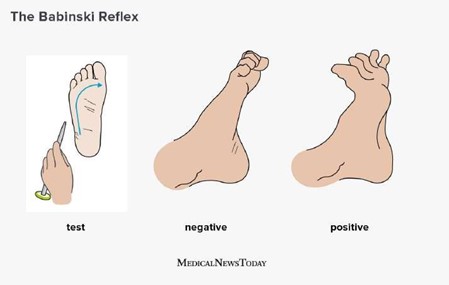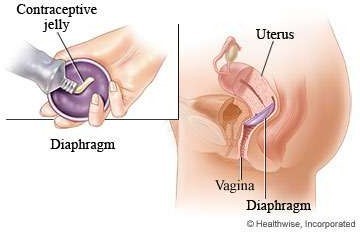A nurse is performing an assessment of a newborn’s Babinski reflex. Which of the following findings should the nurse expect?
Eversion of the great toe
Flexion of the forearm
Downward curl of the toes
Extension of the leg
The Correct Answer is A
The Babinski reflex is a normal reflex present in newborns and infants up to about 2 years old. It is elicited by stroking the lateral aspect of the sole of the foot from the heel towards the toes. A positive Babinski reflex is characterized by dorsiflexion (upward movement) of the big toe and fanning out of the other toes. This is also known as an extensor response.
Therefore, option a, eversion of the great toe, is the expected finding for a positive Babinski reflex. Options b, c, and d are not consistent with a positive Babinski reflex.

Nursing Test Bank
Naxlex Comprehensive Predictor Exams
Related Questions
Correct Answer is A
Explanation
The Babinski reflex is a normal reflex present in newborns and infants up to about 2 years old. It is elicited by stroking the lateral aspect of the sole of the foot from the heel towards the toes. A positive Babinski reflex is characterized by dorsiflexion (upward movement) of the big toe and fanning out of the other toes. This is also known as an extensor response.
Therefore, option a, eversion of the great toe, is the expected finding for a positive Babinski reflex. Options b, c, and d are not consistent with a positive Babinski reflex.

Correct Answer is D
Explanation
After giving birth, a woman's body undergoes many changes, including changes in the size and shape of the vagina. It is essential to have the correct size of diaphragm to ensure its effectiveness.
Therefore, the nurse should instruct the client to have a provider refit her for a new diaphragm.
Option a is incorrect because the diaphragm should be cleaned with warm water and mild soap, not an oil- based vaginal lubricant.
Option b is incorrect because the diaphragm should be removed no sooner than 6 hours after intercourse but should not be left in place for more than 24 hours.
Option c is incorrect because oil-based vaginal lubricants can damage latex diaphragms, reducing their effectiveness as a contraceptive method. Water-based lubricants should be used instead.

Whether you are a student looking to ace your exams or a practicing nurse seeking to enhance your expertise , our nursing education contents will empower you with the confidence and competence to make a difference in the lives of patients and become a respected leader in the healthcare field.
Visit Naxlex, invest in your future and unlock endless possibilities with our unparalleled nursing education contents today
Report Wrong Answer on the Current Question
Do you disagree with the answer? If yes, what is your expected answer? Explain.
Kindly be descriptive with the issue you are facing.
